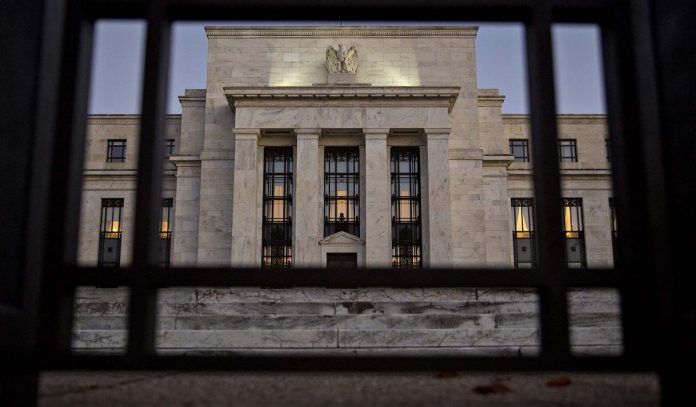
NEW YORK – The United States economy is showing some vulnerabilities as investors take increasing risks with corporate debt and businesses rely on “historically high” borrowing levels, the Federal Reserve said Wednesday in its first-ever financial stability report.
“High leverage has historically been linked to elevated financial distress and retrenchment by businesses in economic downturns,” the U.S. central bank said in the report. “Such an increase in financial distress, should it transpire, could trigger a broad adjustment in prices of business debt.”
The Fed also cautioned that escalating trade tensions could trigger a “particularly large” drop in asset prices because “valuations appear elevated relative to historical standards.” Equity prices, in particular, are “somewhat high” relative to corporate earnings forecasts.
But the news was far from all bad. The report, which the Fed intends to issue regularly, noted that Wall Street banks are “strongly capitalized,” broker-dealers’ leverage is much lower than it was before the 2008 financial crisis and insurance companies are healthy.
The document’s release comes on the heels of a shake-out in financial markets. The Standard & Poor’s 500 Index has slipped recently on a variety of concerns, from worries about the U.S.-China trade war to doubts about lofty valuations of technology shares. Corporate bond spreads have also widened as investors have become more risk averse in the face of higher interest rates from the Fed.
Still, the economy is primed to rack up its fastest growth since 2005 this year and is on course to achieve its longest-running expansion ever in the middle of 2019. Unemployment is at a 48-year low, and inflation is right at the Fed’s 2 percent target.
Having noted that investors are “appearing to exhibit a high tolerance for risk-taking,” the report highlights particular concern with leveraged lending, finding that the riskiest companies are the ones piling on the most additional debt.
For Wall Street, Wednesday’s report could provide clues into the Fed’s thinking on when it might use an obscure but powerful tool: the so-called counter-cyclical capital buffer, a mechanism that many countries including the U.S. established to increase capital demands at big banks when a robust economy starts to show strain.
When triggered, it forces lenders to set aside additional capital – up to 2.5 percent of risk-weighted assets – when times are good. The money would subsequently be released back to the banks when economic conditions deteriorated so that it would be available for lending.
The Fed’s rules say the counter-cyclical capital buffer will be turned on only when “systemic vulnerabilities are meaningfully above normal.’’ Both Fed Chairman Jerome Powell and Vice Chairman for Supervision Randal Quarles have suggested that criteria has not yet been met. But fellow board member, Governor Lael Brainard, has been more open to activating the buffer, as have a number of regional Fed bank presidents who don’t have a vote on the issue. The Fed board is expected to consider the matter in January.
The Fed has lagged behind other major central banks in publishing a financial stability report, but it’s now expected to issue such documents twice a year. Powell is likely to discuss the report and its conclusions at a speech later Wednesday to the Economic Club of New York.
Jesse Hamilton and Rich Miller are reporters for Bloomberg News.











